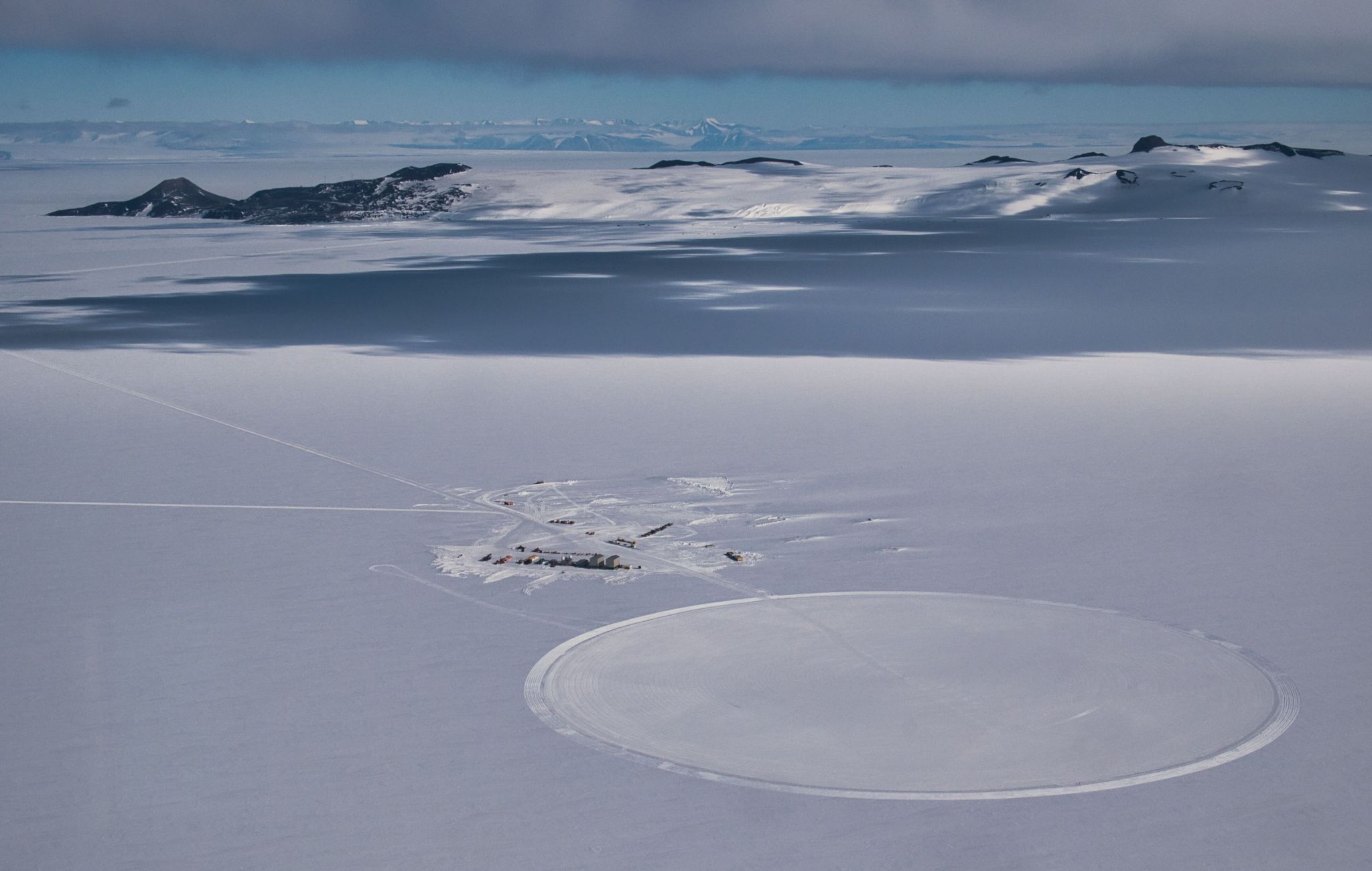12.12.2024

NASA’s Scientific Balloon Program has returned to Antarctica’s icy expanse to kick off the annual Antarctic Long-Duration Balloon Campaign, where two balloon flights will carry a total of nine missions to near space. Launch operations will begin mid-December from the agency’s Long Duration Balloon camp located near the U.S. National Science Foundation’s McMurdo Station on the Ross Ice Shelf.
“Antarctica is our cornerstone location for long-duration balloon missions, and we always look forward to heading back to ‘the ice,’” said Andrew Hamilton, acting chief of NASA’s Balloon Program Office at the agency’s Wallops Flight Facility in Virginia. “It’s a tremendous effort to stage a campaign like this in such a remote location, and we are grateful for the support provided to us by the U.S. National Science Foundation, New Zealand, and the U.S. Air Force.”
This year’s Antarctic campaign includes investigations in astrophysics, space biology, heliospheric research, and upper atmospheric research, along with technology demonstrations. The campaign’s two primary missions include:
- GAPS (General Anti-Particle Spectrometer), led by Columbia University in New York, is an experiment to detect anti-matter particles produced by dark matter interactions. The anti-particles stemming from these interactions in our galaxy can only be observed from a suborbital platform or in space, since Earth’s atmosphere shields us from the cosmic radiation. GAPS aims to provide an unprecedented level of sensitivity to certain classes of anti-particles, allowing the exploration of a currently unexplored energy regime of the elusive dark matter.
- Salter Test Flight Universal, led by NASA’s Columbia Scientific Balloon Facility in Palestine, Texas, will test and validate long-duration balloon and subsystems, while supporting several piggyback missions on the flight.
Piggyback missions, or smaller payloads, riding along with the Salter Test Flight Universal mission include:
- MARSBOx (Microbes in Atmosphere for Radiation, Survival, and Biological Outcomes Experiments), led by the U.S. Naval Research Laboratory, will expose melanized fungus, called Aspergillus niger, to the stratosphere’s extreme radiation and temperature fluctuations, low atmospheric pressure, and absence of water — conditions much like the surface of Mars. Knowledge of how this fungus adapts to protect itself in this harsh environment could lead to the development of treatments to protect astronauts from high radiation exposure.
- EMIDSS-6 (Experimental Module for Iterative Design of Satellite Subsystems 6), led by National Polytechnical Institute − Mexico, is a technological platform with experimental design and operational validation of instrumentation that will collect and store data from the stratospheric environment to contribute to the study of climate change.
- SPARROW-6 (Sensor Package for Attitude, Rotation, and Relative Observable Winds – 6), led by NASA’s Balloon Program Office at NASA Wallops, will demonstrate relative wind measurements using an ultrasonic anemometer designed for the balloon float environment.
- WALRUSS (Wallops Atmospheric Light Radiation and Ultraviolet Spectrum Sensor), led by the Balloon Program Office at NASA Wallops, is a technology demonstration of a sensor package capable of measuring the total ultraviolet wavelength spectrum and ozone concentration.
- INDIGO (INterim Dynamics Instrumentation for Gondolas), led by the Balloon Program Office at NASA Wallops, is a data recorder meant to measure the shock, rotation, and attitude of the gondola during the launch, float, and landing phases of flight. Data will be used to improve understanding of the dynamics of flight and to inform the design of future components and hardware.
The remaining two piggyback missions are led by finalists of NASA’s FLOATing DRAGON (Formulate, Lift, Observe, And Testing; Data Recovery And Guided On-board Node) Balloon Challenge, sponsored by the Balloon Program Office at NASA Wallops and managed by the National Institute of Aerospace. The challenge was created for student teams to design, build, and fly an autonomous aerial vehicle, deployed from a gondola during a high-altitude balloon flight. The teams’ student-built data vaults will be safely dropped from around 120,000 feet with the capability to target a specific landing point on the ground to manage risk. The missions participating in the Antarctic campaign are Purdue University’s Purdue DRAGONfly, and University of Notre Dame’s IRIS v3.
NASA’s zero-pressure balloons, used in the Antarctic campaign, are made of a thin plastic film and are capable of lifting up to 8,000 pounds of payload and equipment to altitudes above 99.8% of Earth’s atmosphere. Zero-pressure balloons, which typically have a shorter flight duration from the loss of gas during the day-to-night cycle, can support long-duration missions in polar regions during summer. The constant daylight of Antarctica’s austral summer and stable stratospheric wind conditions allow the balloon missions to remain in near space for days to weeks, gathering large amounts of scientific data as they circle the continent.
NASA’s Wallops Flight Facility in Virginia manages the agency’s scientific balloon flight program with 10 to 15 flights each year from launch sites worldwide. Peraton, which operates NASA’s Columbia Scientific Balloon Facility in Palestine, Texas, provides mission planning, engineering services, and field operations for NASA’s scientific balloon program. The Columbia team has launched more than 1,700 scientific balloons over some 40 years of operations. NASA’s balloons are fabricated by Aerostar. The NASA Scientific Balloon Program is funded by the NASA Headquarters Science Mission Directorate Astrophysics Division. NASA balloon launch operations from Antarctica receive logistical support from the U.S. National Science Foundation’s Office of Polar Programs, which oversees the U.S. Antarctic Program.
Quelle: NASA

